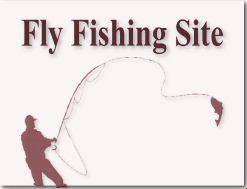|
|
ARTICLE
10
|
Fly Fishing Basics
Brief History of Fly Fishing Fly fishing is a popular worldwide sport that uses fly rods, fly lines, fly reels and artificial flies. A fly is fish lure or bait that mimics small insects and other small animals to attract potential catch. How it all began There are many versions of the history of fly fishing. There are many who attribute the use of an artificial fly to Roman Claudius Aelianus in the second century. William Radcliff in his book Fishing from the Earliest Times, credits the beginning of fly fishing to Martial (Marcus Valerius Martialis) who was born two hundred years before Claudius Aelianus. Whether it was Aelianus or Martialis, there is little argument that the ancient practice of fly fishing started in Europe. Little is known about fly fishing in the middle ages but there is a reference in 1210 from a romance by Wolfram von Eschenbach, whose hero Schionatulander wades barefoot in a stream to catch trout and grayling with a fly. Another written record about fly fishing is The Treatyse on Fysshynge with an Angle was published in 1496 which was published as part of The Boke of St. Albans. The book contains instructions on how to make rod, line and hook and preparing different kinds of flies for different times of the year. Trout and Salmon were the species caught for fly fishing in the fifteenth century In the seventeenth century, fly fishermen used twisted horsehairl line. Most of thme made their own rods from butts of cane which they covered with think leather or parchment. Downstream casting was preferred by many fly fishers even though the appropriate method should have been casting downwind until they later learned how to go with the angle of incidence of the wind changes on the river. Isaac Walton and Charles Cotton, two of the famous fly fishers during the early days, list twelve began the diversification of fly patterns. The rod underwent breakthrough changes in the eighteenth century with the addition of running rings. The invention gave greater control to anglers while fishing although it had not done much in casting. The winged fly became popular during the first half of the nineteenth century, the period of many experimentations such as more improvement to rod design, production of plaited silk lines and silkworm gut becoming more widely used. Fly fishing was further developed in the nineteenth century in Britain as fly fishing clubs emerged. There were several books about fly fishing techniques being written. The development of fly reels soon followed as simple mechanical tool that were greatly helpful at the time. Some old fly fishing shops are still in existence today like the Orvis Company in Manchester, Vermont which was founded by Charles F. Orvis in 1856 and The Farlows of London, which was established in 1840. At present, hundred of fly fishing clubs are active around the world. There are even movies featuring fly fishing like “A River Runs Through It” starring Brad Pitt and directed by Robert Redford. |


